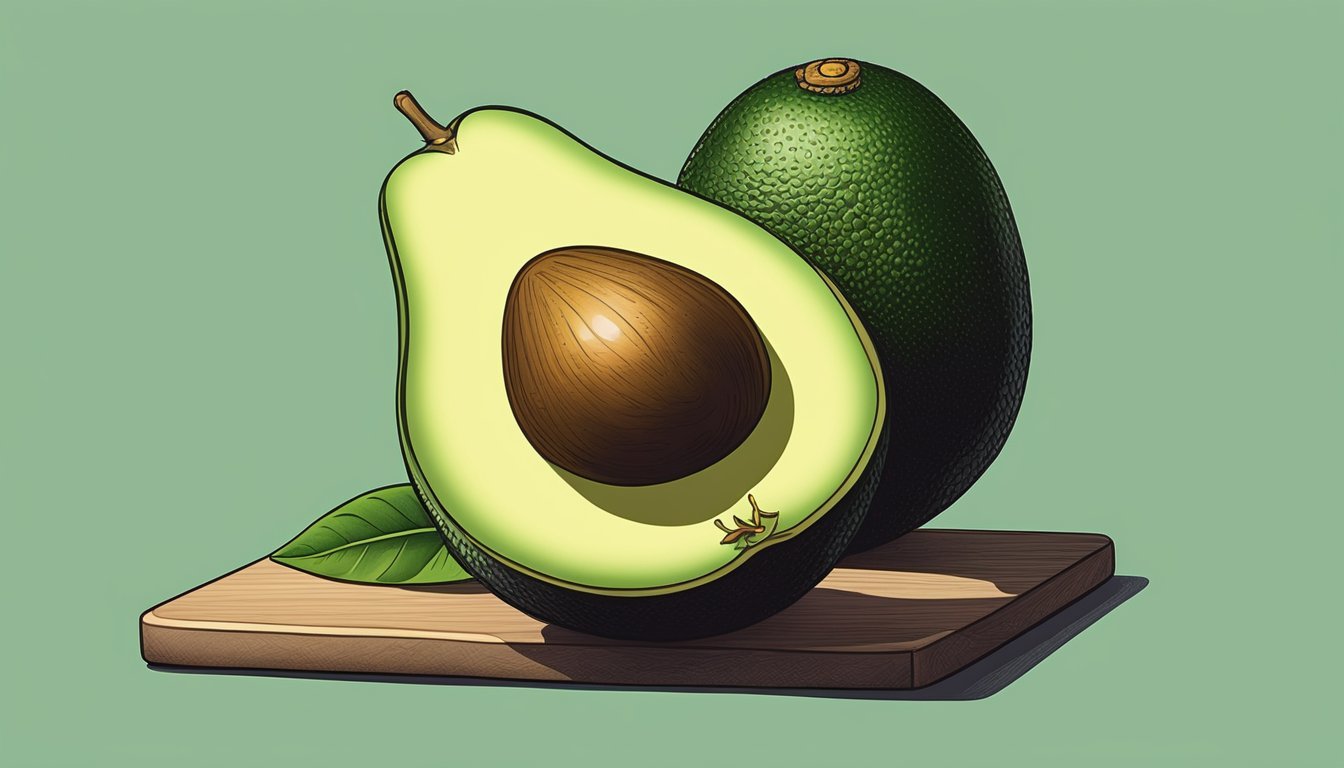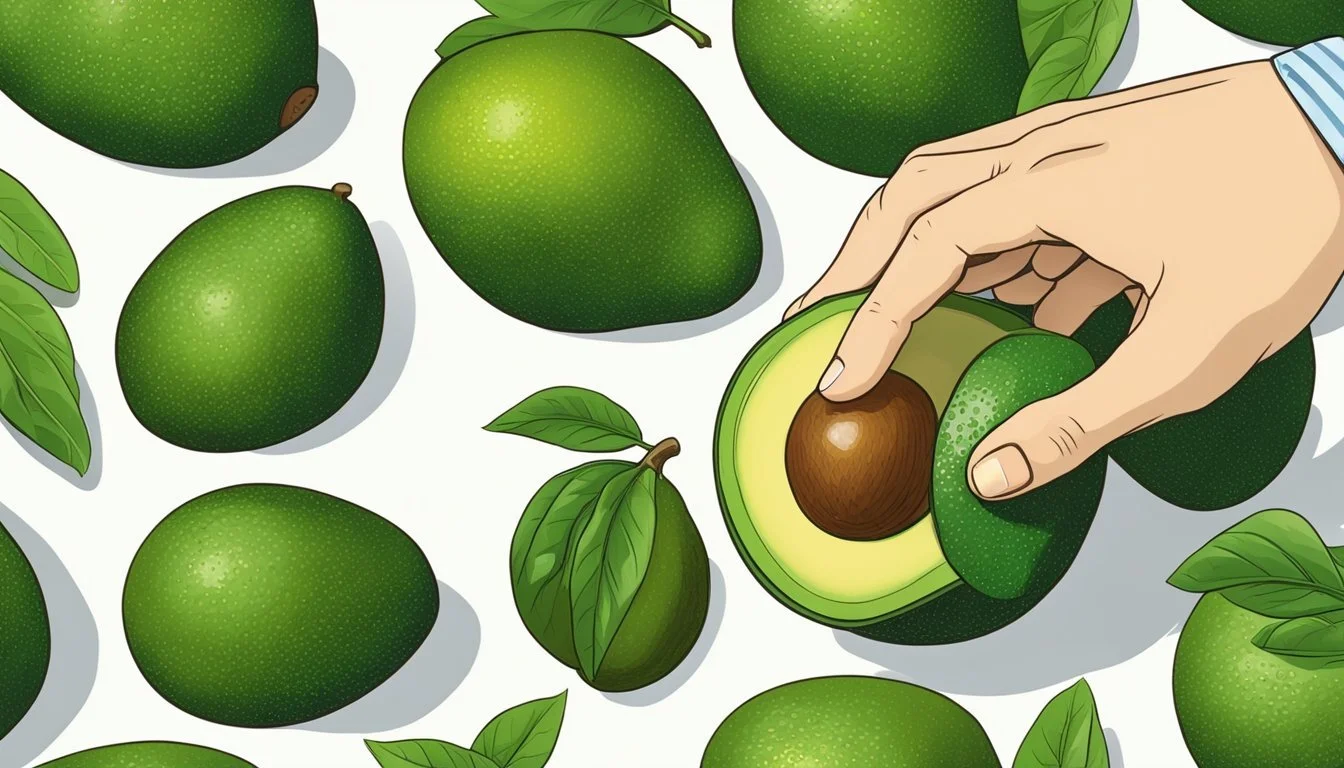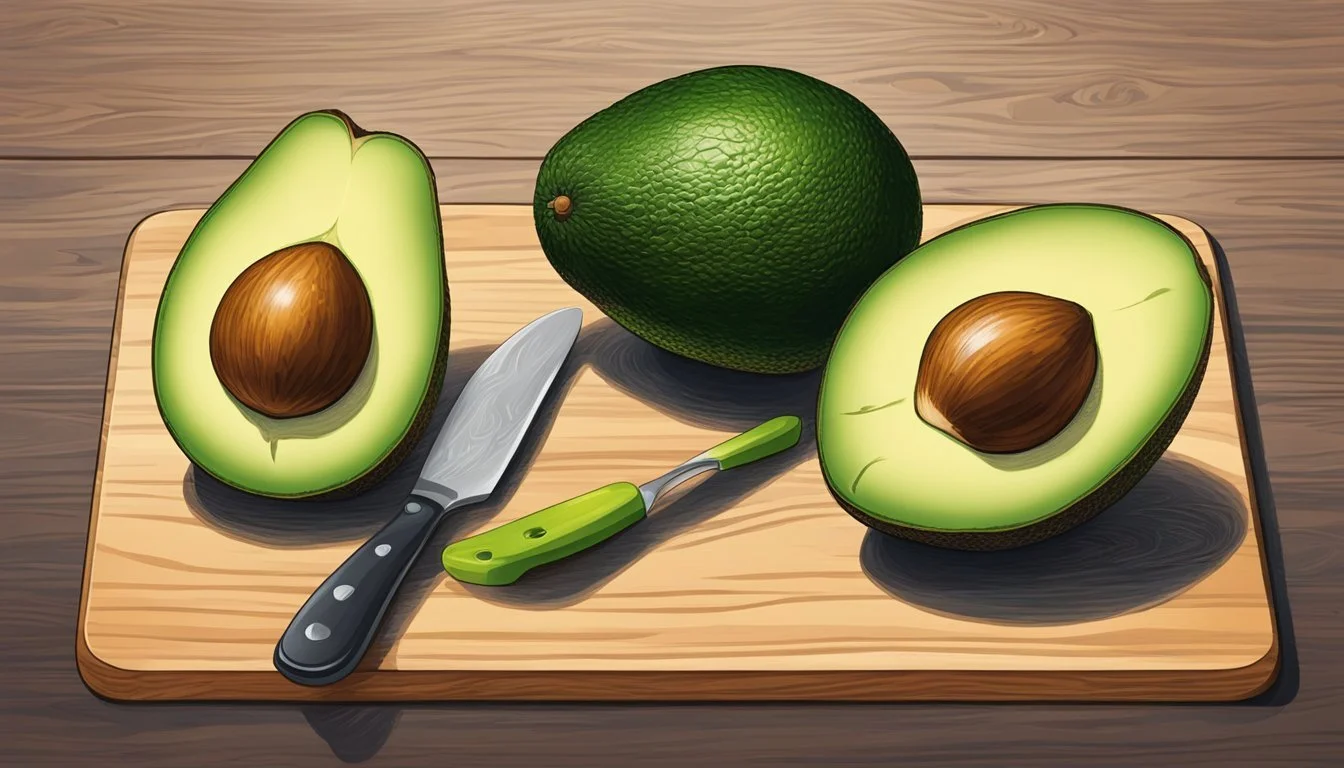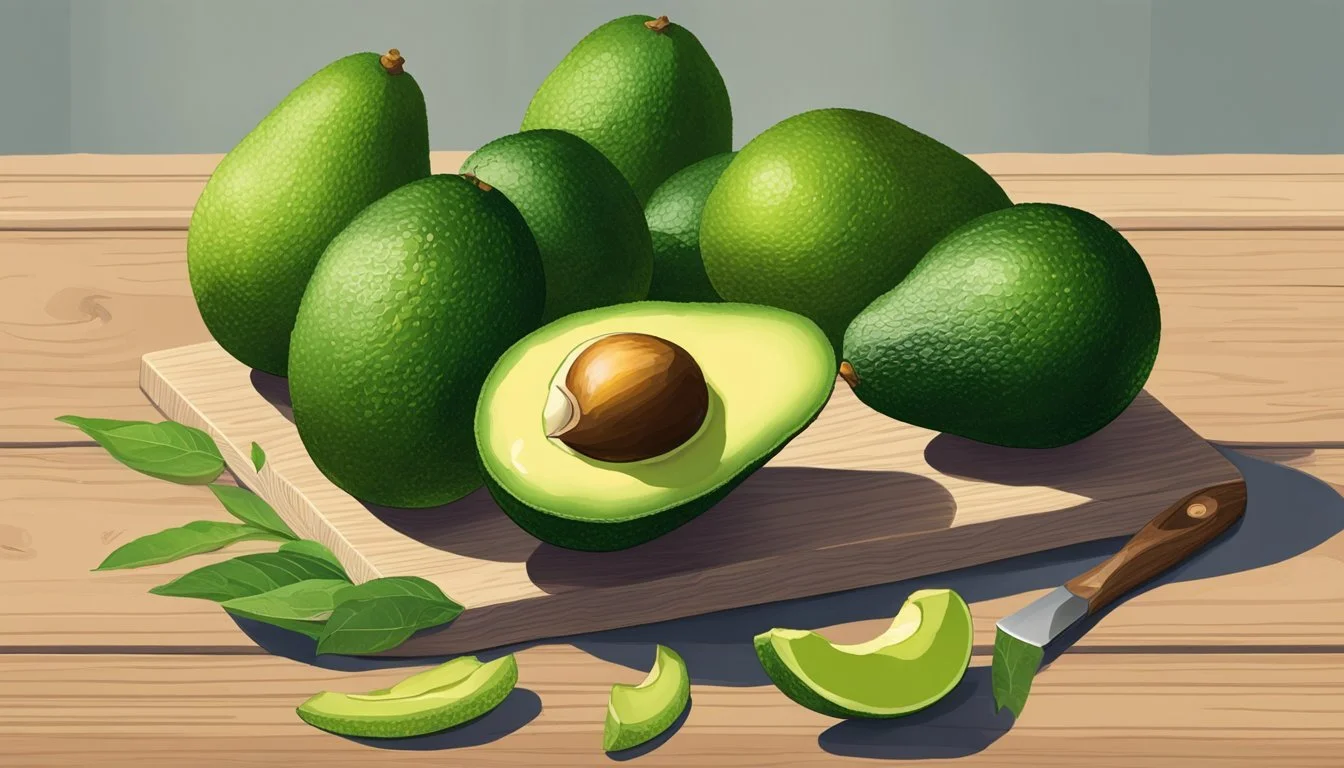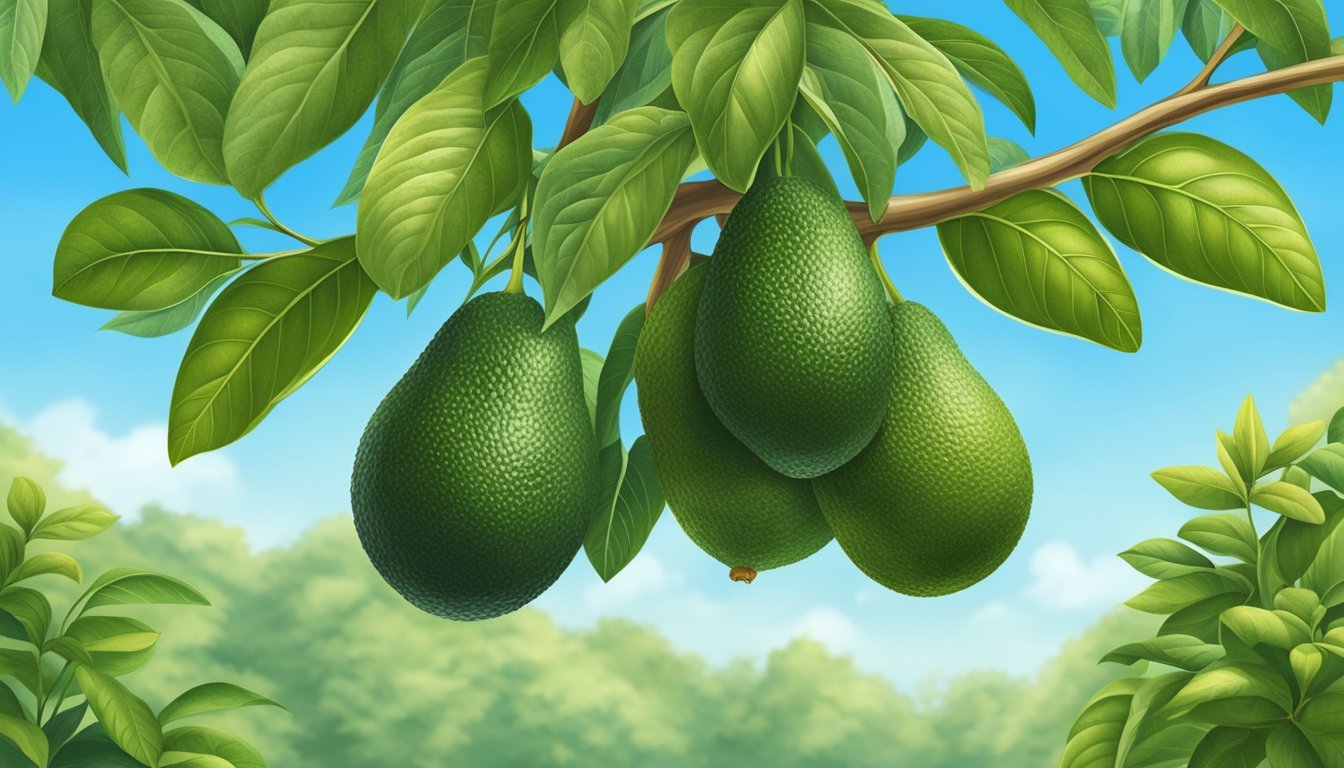How to Tell if Zutano Avocados Are Ripe
Your Ultimate Ripeness Checklist
Determining the ripeness of a Zutano avocado is essential for enjoying its unique flavor and texture. Unlike some avocado varieties that darken as they ripen, Zutano avocados retain their green skin even when they're ready to eat, which can make it a little tricky to assess their ripeness. These medium-sized, pear-shaped avocados are known for a more pronounced, slightly pebbly skin, and a lower fat content compared to more commonly known types like Hass. Understanding the subtleties of their ripeness indicators ensures that you can enjoy these avocados at their peak of flavor.
Ripeness in Zutano avocados manifests through a slight give when the fruit is gently squeezed, similar to other avocado varieties. However, identifying the perfect level of ripeness involves more than touch; visual cues such as uniform coloration without dark spots and an understanding of the typical firmness for this variety are also important. Recognizing these signals helps prevent the disappointment of cutting into an underripe or overripe fruit. Knowing optimal storage and ripening methods, as well as preparation tips, can enhance your experience with Zutano avocados, whether you are looking to slice them for a salad or mash them for a dip.
Key Takeaways
Zutano avocados stay green when ripe, so ripeness is determined by feel and subtle visual cues.
The ideal Zutano avocado yields to gentle pressure and lacks blemishes, indicating it's ready to eat.
Proper ripening, storage, and usage techniques maximize the enjoyment of Zutano avocados' distinctive flavor and texture.
Identifying Zutano Avocados
When selecting Zutano avocados, recognizing their unique characteristics and understanding how they differ from other varieties are crucial. These steps ensure you choose the best quality fruit.
Characteristics of Zutano Avocados
Zutano avocados are distinct in their appearance and texture. They typically weigh between 8-16 ounces and retain a bright green color even when ripe, which sets them apart from other varieties that darken as they mature. The Zutano's shape is pear-shaped like many avocados, but it's their skin that is tellingly different — it remains smooth and shiny. The flesh inside is a pale green color with a notable fibrous consistency compared to other avocados.
Compared to Hass and Other Varieties
Zutano avocados are often compared with the well-known Hass avocados and the similar Fuerte avocados. While Hass avocados are recognized for their dark, pebbled texture when ripe, the Zutano maintains a smooth surface. Additionally, the Hass variety generally has a higher fat content, which contributes to its creamy texture and rich flavor. The Zutano, on the other hand, has a lower fat content and a more subtle taste. Compared to Fuerte avocados, which are also pear-shaped and have a brighter green skin, Zutanos are less well-known but still celebrated for their own qualities.
Stages of Ripeness
Determining the ripeness of Zutano avocados requires attention to skin color and texture, as well as the response of the fruit to gentle pressure.
Understanding Ripeness
The ripening process of Zutano avocados involves several stages, from hard and green to soft and edible. An unripe Zutano avocado will have a bright green color and firm texture. As they ripen, the skin may remain green, which is characteristic of Zutano avocados, distinguishing them from other varieties that turn dark green to black.
Ripeness Indicators
Key physical indicators guide one in assessing Zutano avocado ripeness:
Color: Unlike some avocados, ripe Zutano avocados keep their green coloration, which can make judging ripeness by color alone challenging.
Texture: An unripe Zutano has a slightly pebbled to smooth texture, while a ripe one maintains this texture but yields to gentle pressure.
Softness: Avocados that feel too soft under gentle pressure, especially if the softness is uneven or localized, are likely overripe.
To test for the perfect ripeness, one applies a soft squeeze; if it yields slightly, the Zutano is at peak ripeness for consumption.
Assessing Ripeness by Touch and Sight
When determining the ripeness of Zutano avocados, one’s senses are invaluable tools. The texture and color of the fruit provide clear indicators of maturity. This section guides through the tactile and visual cues to seek.
The Pressure Test
A ripe Zutano avocado yields to firm, gentle pressure without feeling mushy. One should perform this test carefully to avoid bruising the fruit. Here's how to conduct the pressure test:
Step 1: Nestle the avocado in the palm and apply gentle pressure with the thumb.
Step 2: Feel for a slight give. The fruit should be firm but not hard. Softness indicates readiness for consumption.
It is critical to avoid using fingertips for this test as they can bruise the fruit, leading to a false assessment of its ripeness.
Visual Inspection
The visual cues of a ripe Zutano avocado include both skin color and surface condition. These are the visual factors to inspect:
Skin Color: Look for a bright green hue; a Zutano avocado remains green even when ripe, unlike some varieties that darken.
Surface Texture: Check for a lightly pebbled texture, which is less pronounced than that of a Hass avocado.
Blemishes: Examine the skin for any large blemishes that may indicate overripeness or internal damage.
Remember, while a Zutano avocado’s color remains constant, a ripe one will display a uniform bright green without dramatic dark spots or discolorations.
Optimal Storage and Ripening Methods
Choosing the right storage and ripening methods is vital to ensure that Zutano avocados develop the best flavor and texture. These techniques can prevent premature spoilage and help retain the fruit's quality.
At Home Ripening Techniques
Zutano avocados ripen after they have been harvested, so consumers often need to ripen them at home. Placing the avocados in a paper bag with an apple or banana can expedite the ripening process. The ethylene gas produced by these fruits encourages the avocados to ripen more quickly. It is crucial to check the avocados daily to avoid over-ripening. Avocados are ripe when they yield to gentle pressure but are not overly soft.
Without Ethylene Accelerators:
Store at room temperature.
Check firmness daily.
With Ethylene Accelerators:
Place Zutano avocados in a paper bag.
Include an apple or banana to release ethylene gas.
Seal the bag loosely and check avocados daily.
Preserving Ripe Avocados
Once ripe, Zutano avocados should be eaten promptly to enjoy their peak flavor. If a delay is necessary, storing them in the refrigerator can slow down the ripening process and extend their freshness. The cold temperature reduces the activity of the enzymes that promote ripening. For cut avocados, applying lemon or lime juice and covering them with plastic wrap before refrigeration can minimize air exposure and delay browning.
Uncut Ripe Avocados:
Place in the refrigerator to extend freshness.
Consume within 5-7 days.
Cut Ripe Avocados:
Brush with lemon or lime juice.
Cover tightly with plastic wrap.
Refrigerate and use within 1-2 days.
Preparation and Usage Tips
When working with Zutano avocados, understanding the proper preparation techniques is essential for optimal taste and texture. Ensuring the avocado is ripe is the first critical step. Now let's explore specific preparation methods and ideas for incorporating Zutano avocados into various recipes.
How to Cut and Slice
After confirming the avocado is ripe, washing the outer skin is recommended as a standard food safety practice. To cut a Zutano avocado, one should:
Place the avocado on a cutting board and slice it lengthwise around the pit.
Twist the two halves apart.
Carefully remove the pit with a spoon or tap a knife into the pit and twist it out.
To slice, use a spoon to scoop out the flesh and place it flat side down on the cutting board. Slice into desired thickness.
For dicing, make a simple grid pattern on each half with a knife, then scoop out the chunks with a spoon.
Tip: Sprinkle lemon juice onto the cut avocado to prevent browning if not using immediately.
Recipe Ideas
Zutano avocados are versatile in the kitchen. Their firmer texture and subtle taste make them a suitable addition for several dishes. Some recipe ideas where Zutano avocados shine:
Salads: Dice the avocado and mix it with leafy greens, tomatoes, and a tangy vinaigrette.
Guacamole: Mash the avocado and blend it with lime juice, diced onions, tomatoes, cilantro, and seasonings.
Avocado Toast: Spread mashed avocado on toasted bread and top with a sprinkle of salt, pepper, and red pepper flakes for a simple breakfast.
Food Toppings: Sliced avocado can be used as a topping for burgers, tacos, or eggs to add a creamy texture.
To sum up, Zutano avocados are a delightful addition to a variety of dishes, from salads and guacamole to toasts and as a food topping. Slicing and dicing them once ripe will unlock their full potential in your culinary creations.
Avoiding Overripe Avocados
To ensure the best taste and texture, it's crucial to recognize and prevent overripeness in Zutano avocados.
Signs of Overripeness
When checking for overripeness, one should look for mushy texture, bruising, and dark brown spots. A gentle squeeze should indicate firmness with a slight give for optimal ripeness; excessive softness often signals that the avocado is overripe. Any visible surface damage or bruising can also be a sign of overripeness, as is a brown coloration of the flesh beneath the skin.
Preventing Overripeness
To prevent avocados from becoming overripe, one should store them at room temperature and monitor them daily. Once they reach optimal ripeness, they can be stored in the refrigerator to slow down the ripening process. Here is a basic guide:
At room temperature: Check firmness daily.
In the refrigerator: Check every two to three days.
Keeping avocados in a cool, dark place away from ethylene-producing fruits prevents premature ripening. If an avocado does start to become overripe, but is not yet brown or mushy, it can still be used for recipes like guacamole or spreads where texture is less critical.
Health Benefits and Nutritional Information
Zutano avocados offer a variety of health benefits due to their nutritional content. These avocados are an excellent source of vitamins, providing essential nutrients like vitamin K, vitamin E, and vitamin C. The fruit is also rich in potassium, which is beneficial for maintaining healthy blood pressure levels.
In terms of calorie content, avocados contribute a substantial amount. However, the Zutano variety is noted for its relatively lower fat content, which includes mono and polyunsaturated fats; these are known as "good fats" that can help to maintain a healthy heart.
Nutrition Facts (per 100g serving):
Calories: Moderate
Total Fat: Lower than Hass avocados
Dietary Fiber: High
Sugar: Low
Protein: Moderate
Key Nutrients:
Vitamin K: Essential for blood clotting and bone health
Vitamin E: An antioxidant that protects body tissue from damage
Vitamin C: Supports immune system function
Potassium: Helps to regulate heart rate and blood pressure
The oil content of Zutano avocados is also lower compared to other varieties like Hass, which may make them a lighter option for those who are monitoring their fat intake. The benefits extend to incorporating Zutano avocados in food as a nutrient-dense ingredient that can enhance the overall healthfulness of meals, contributing to a well-rounded diet. They can be a tasty and beneficial addition to salads, sandwiches, and various other dishes.
Understanding Avocado Cultivation
To successfully grow and harvest avocados, one must understand the specific growing conditions required for the trees and the best practices for harvesting the produce. Attention to detail in these areas is essential for optimal yield and fruit quality.
Growing Conditions
Avocado trees thrive in warm climates with good sunlight. It is essential to provide well-drained soil and adequate space for the trees to mature. Farmers need to be attentive to irrigation as avocados require consistent watering—particularly during dry periods—to develop a robust root system and support fruit production. The ideal temperature range for avocado trees, including the Zutano variety, is between 60°F to 85°F. Here are the key factors for the required growing conditions:
Climate: Warm, preferably with moderate humidity.
Soil: Deep, loose, and well-drained with a pH of 6 to 6.5.
Sunlight: Full sun exposure for at least 6 hours a day.
Spacing: Trees should be planted 20 to 30 feet apart to allow for full growth and air circulation.
Watering: Regular, deep watering with excellent drainage to prevent root rot.
Harvesting Practices
The harvest of avocados is a delicate process that requires careful timing. Avocados do not ripen on the tree and are harvested based on size and external color. In California, which is one of the leading producers of avocados in the United States, Zutano avocados are typically harvested from the fall through early spring. Farmers use specific techniques to determine if avocados are ready to be picked, such as using a dry matter content test. Once harvested, avocados ripen within a few days to a week, depending on storage conditions. Here is a brief overview of harvesting practices:
Timing: Generally, when the fruit reaches the proper size and the outer skin exhibits the characteristic color of the variety.
Technique: Carefully picked by hand using poles or platforms to reach the higher branches.
Post-Harvest: Store at room temperature for even ripening, away from direct sunlight.
Avocado trees also require careful monitoring for optimal flower and leaf health, which contributes to successful fruit production.
Avocados in the Marketplace
Navigating the intricacies of avocado selection is instrumental for consumers seeking quality fruit. Attention to details such as firmness and seasonality can vastly enhance the buying experience at the grocery store.
Selecting Quality Avocados at the Store
Shoppers typically gauge avocado ripeness through tactile cues. Zutano avocados, characterized by their shiny, green skin, remain green even when ripe, unlike some other varieties that change color. Therefore, when evaluating quality, one should assess firmness—a ripe Zutano will yield to gentle pressure but should not feel squishy. The fruit should be free from soft spots and blemishes which often indicate overripeness or damage.
Availability and Seasonality
Zutano avocados have a specific seasonal prime, typically available from early fall through winter. Their availability may vary depending on the region and climate conditions. Consumers should note that the peak season for these avocados may differ from the more popular Hass variety, which could affect their height of availability in grocery stores. During the off-season, Zutanos may be less common, leading to heightened anticipation amongst consumers for their return to market shelves.

